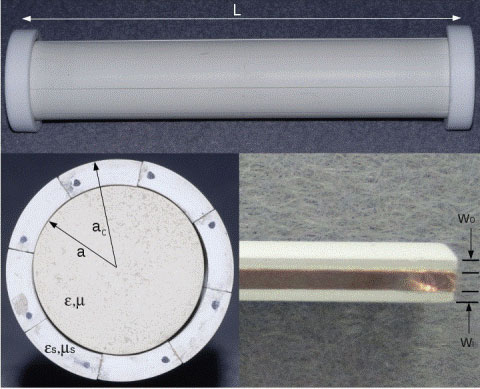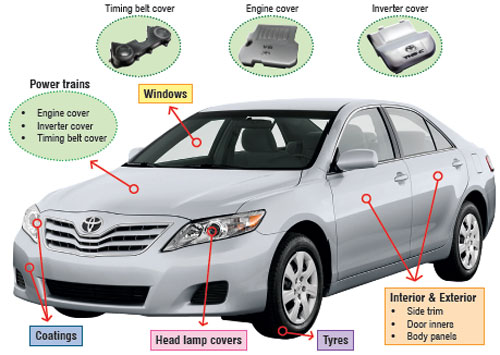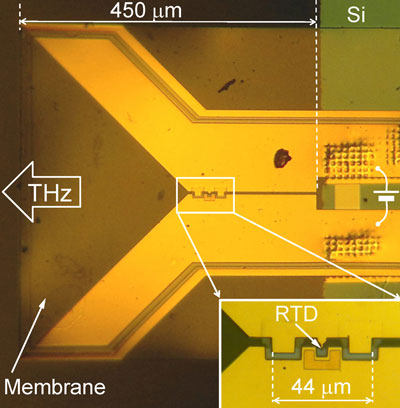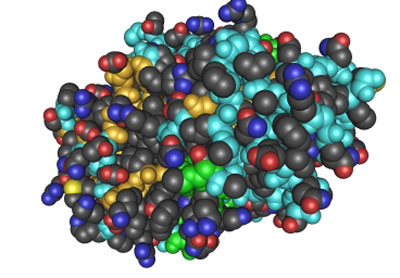I write Scifi. I've moved the blog to http://www.softmachine.net You'll find all the new stuff there @NathanMcGrathSF. Nathan.
Monday, 5 March 2012
Most of your body is now upgradable by Technology
By the end of the year researchers will try out the first bionic eye implant in the UK hoping to help a blind patient see for the first time.
Check out this cool BBC news interactive page for a rundown of what's going on/
We've been cramming more intricate engineering into our bodies than you might think. For more on this fascinating subject, check out The Bionic Body Shop
Lightning seed: Tough, relentless cyberpunk action.
In an icebound future, fanatics with an dangerously unstable, climate transforming WMD, plan to fix the weather and save the world. The only person with the disarm codes has amnesia. It's down to a war-weary veteran to keep him alive in a deadly chase across a haunted America to reach the bomb
Kindle: http://bit.ly/LS-US
Google http://bit.ly/LS-CT
Prosthetics controlled like real limbs
 |
| Major advances in neuroscience could lead to a wider range of brain-controlled prosthetic limbs that can restore mobility for people. (Credit: © ktsdesign / Fotolia) |
Their new study, published March 4 in the advanced online publication of the journal Nature, shows that through a process called plasticity, parts of the brain can be trained to do something they normally do not do; like controlling a prosthetic limb for example.
The new study advances work by researchers who have been studying the brain circuits used in natural movement in order to mimic them for the development of prosthetic devices.
"What we hope is that our new insights into the brain's wiring will lead to a wider range of better prostheses that feel as close to natural as possible," said Jose Carmena, UC Berkeley associate professor of electrical engineering, cognitive science and neuroscience.
Full Story at Science Daily 04-03-2012
Sunday, 4 March 2012
Solar Flare could frazzle world's circuits.
 |
| Solar flares (credit: SOHO/NASA/ESA) |
The Earth has a roughly 12 percent chance of experiencing an enormous megaflare erupting from the sun in the next decade, according to space physicist Pete Riley, senior scientist at Predictive Science in San Diego, California, writing n Space Weather on Feb. 23.
This event could potentially cause trillions of dollars’ worth of damage and take up to a decade to recover from, according to a 2008 report from the National Research Council.
The last gigantic solar storm, known as the Carrington Event, occurred more than 150 years ago and was the most powerful such event in recorded history.
Ref.: Pete Riley, On the probability of occurrence of extreme space weather events. Space Weather, 2012 [DOI: 10.1029/2011SW000734] (Source: Kurzweil)
Project HAARP. Brollies will be useless against this threat
HAARP began in 1990 and is funded by the Office of Naval Research jointly with the Air Force Research Laboratory. Its official purpose is to "analyze the ionosphere and investigate the potential for developing ionospheric enhancement technology for radio communications and surveillance purposes."
This invention has a phenomenal variety of possible ramifications and potential future developments. As alluded to earlier, missile or aircraft destruction, deflection, or confusion could result. particularly when relativistic particles are employed. Also. large regions of the atmosphere could be lifted to an unexpectedly high altitude so that missiles encounter unexpected and unplanned drag forces with resultant destruction or deflection of same. Weather modification is possible by, for example, altering upper atmosphere wind patterns or altering solar absorption patterns by constructing one or more plumes of atmospheric particles which will act as a lens or focusing device.
Read More on Project HAARP
Saturday, 3 March 2012
Neural implants to replace damaged sensory cells
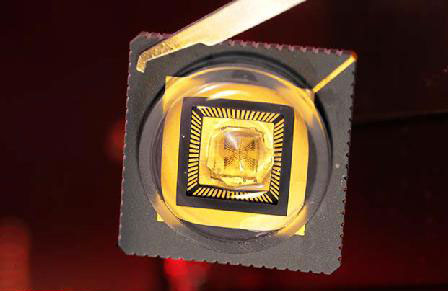 |
| Biocompatible chips made of graphene. |
(Nanowerk News) In the future, neural implants could replace destroyed sensory cells in the eye or ear – a dream come true for humanity.
One of the greatest challenges yet to be addressed is designing the interface between medical technology and human tissue.
In order to overcome the limitations of existing models, scientists from Forschungszentrum Juelich and eleven other institutions involved in the NeuroCare project, which kicked off on 1 March 2012, will develop novel biointerfaces made of carbon.
If you are a regular visitor to this blog, you will know nanoparticles can be absorbed by the body through the skin or via ingestion as part of foods where nanotechnology is part of of the production process.
You will also have read about nanoscale wireless communication.
It is a commonly held rule that technologies converge and it takes little imagination to consider the dangers of neuro and nanotechnology convergence.
The world of Alister Cloud is one possible future where these convergences have already taken place.
Set in a society where governments depend upon ruthless Private Military Companies willing to use any technological advantage to retain contracts and control, the book explores the darker side of today's emerging technologies.
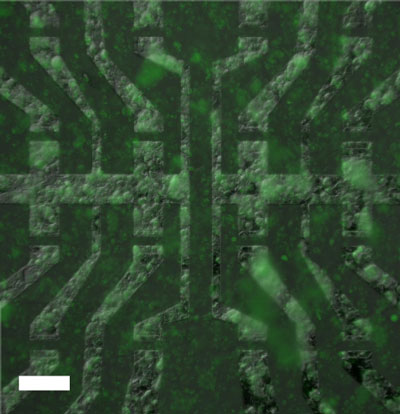 |
| At the end of 2011, researchers from Forschungszentrum Jülich and Technische Universität München grew cardiac cells on a graphene transistor. |
Thursday, 1 March 2012
The Greeks, the riots, the dog.
One committed protester has been at the front line of Greece protests for years.
The dog, thought to be a stray called Loukanikos, or Sausage, has become both a symbol and inspiration for Greek protesters, showing no fear, always in the action, constantly barking down police.
Anonymous take down Interpol Website

The Guardian Reports the following
"Interpol's website appears to have been the victim of a cyber-attack after the international police agency announced the arrests of 25 suspected members of the hacking activist group Anonymous in Europe and South America.
The website went down briefly on Tuesday as supporters of Anonymous made online claims that it had been targeted following the arrests in Argentina, Chile, Colombia and Spain. It was quickly back up and running but was loading slowly."Full story on the >Jump Here<
Get involved in the Public Consultation on Neurotechnology
 |
| From Nuffield Council on Bioethics website |
Recent developments in Neurology, computing and nanotechnology have led to methods of enabling the brain to directly control computers and thereby machinery; computers that can translate or 'read' thoughts, methods of influencing our thoughts and emotions.
As a result, the Nuffield Council on Bioethics has launched a public consultation on the ethics of the technology. Download the consultation doc and give your feedback. You don't need to be an academic or researcher to tell them what you think of the emerging technologies and if you would use them should the need or opportunity arise. Go on, get involved. You can download the consultation paper from the link on the Nuffield Council on Bioethics page
 |
| Image from BBC News |
"Hopes of curing terrible diseases, and fears about the consequences of trying to enhance human capability beyond what is normally possible.
"These challenge us to think carefully about fundamental questions to do with the brain: what makes us human, what makes us an individual, and how and why do we think and behave in the way we do."
For More information and to contribute to the consultation, go to the Nuffield Council on Bioethics page here
Wednesday, 29 February 2012
Wi-fi on an atomic scale - the perfect fit
Alister's SoftMachine outfit is a morphing, colour changing outfit that receives instructions from both Alister and the world's most powerful supercomputer. The wireless function is built into the nanomaterial of the outfit.
Here's a rehash exercise I undertook of the Science Daily article just to help me understand what had been achieved
"A single atom or molecule acts as a quantum bit processing signals delivered via single photons.
It is possible to set up a situation where single molecules can be detected and single photons generated.
The problem is putting together a simple one on one interaction because billions of photons per second are usually impinged on a molecule to obtain a signal from it.
First off, you would have to find a suitable source of single photons, which have the proper frequency and bandwidth. Although lasers come in different colours and specifications, something that fires single photons can't be bought at Maplins or Radio Shack
One common way to get around this difficulty in atomic physics is to build a cavity around the atom so that a photon remains trapped for long enough times to increase the chances of a 1-1 interaction.
And it's been done. Connecting a single flying photon with a single molecule.
So a team of scientists (at ETH Zurich and Max Planck Institute for the Science of Light in Erlangen) led by Professor Vahid Sandoghdar made something that spits out single photons.
How? Well they cheated a little by using a photon release event that happens naturally. When an atom or molecule absorbs a photon it makes a transition to a so-called excited state. After a few nanoseconds (one thousand millionth of a second) this state decays to its initial ground state and emits exactly one photon.
So the group used two samples of fluorescent molecules embedded in organic crystals and cooled them to about 1.5 K (-272 °C). Single molecules in each sample were detected by a combination of spectral and spatial selection.
To generate single photons, a single molecule was excited in the “source” sample and when the excited state of the molecule decayed, the emitted photons were collected and tightly focused onto the “target” sample at a distance of a few meters.
The team had to (1) make sure the photon and the molecule had the same frequency; and (2) get the single photons to interact with the target molecule in an efficient manner.
Not that easy when the focus of a light beam cannot be smaller than a few hundred nanometers; while a molecule is about one nanometer in size (100,000 times smaller than the diameter of a human hair); which would lead to most of the incoming light (photons) going around the molecule, i.e. without them seeing each other.
Here's the 'but'; if the incoming photons are resonant with the quantum mechanical transition of the molecule, the molecule acts more like a prefect little catchers glove to the area of the focused light and grabs the light waves in its vicinity.
The experimental work was performed at ETH Zurich before the group of Prof. Sandoghdar moved to the newly founded Max Planck Institute for the Science of Light in Erlangen in 2011."
IBM close to Working Quantum Computer
Monday, 27 February 2012
Free Links to Increase your browsing privacy
On March 1st, Google will implement its new, unified privacy policy, which will affect data Google has collected on you prior to March 1st as well as data it collects on you in the future. Earlier this week, we showed you how to delete your Google Web History in order to prevent Google from combining your Web History data with the data it has about you on its other products to provide you with personalized ads or suggestions across all of its products. You may also wish to delete your YouTube Viewing and Search History, which can reveal particularly sensitive information about you, including your location, interests, age, sexual orientation, religion, and health concerns.
Ever asked yourself 'What is Matter?'
Saturday, 25 February 2012
Nanomaterials and the 'do anything you want' outfit.
The mechanism also enables experimental control, which has earlier been impossible. The mechanism can be used to make various kinds of novel carbon nanotubes, to encapsulate molecules insides the tubes, or to make tubules from ribbons made out of other planar nanomaterials.
For the past twenty years, carbon nanotubes have been described as "rolled-up graphenes," even though no-one ever really did the rolling. Today, nanotubes, along with many other nanomaterials, are made by atom-by-atom growth.
The results were published in Physical Review B. The research used the computer resources of the Finnish IT Centre for Science (CSC), based in Espoo.
Part Two.
Add to this a couple of other developments reported here in the blog. (a) atom sized transistors and (b) technologies powered by touch and, boom: a computer woven into the nanomaterials of your clothing and powered by the kinetic and thermal energy produced by your movement.
Elsewhere here you'll find posts on brain-machine interfaces. It is feasible to consider a material containing nanotechnology components with different functions; one of which will be to allow manipulation of the different technologies in the outfit by thought alone.
Thursday, 23 February 2012
Nanotechnology, neuroscience, bye bye free will..
Things have moved on from then. Developments in nanotechnology means that data can now flow in two directions.
take the New Scientist article (reported in io9): " For the first time ever, scientists can control human brain cells using quantum dots
What if you could treat conditions ranging from Alzheimer's to blindness, all with a flash of light? Researchers think it's possible — and they plan on using tiny particles called quantum dots to do it.
Brain stimulation can be incredibly tricky. Performing it from outside the head is effective, but doesn't give you very much specificity when it comes to turning on a specific brain region...Recently, researchers have sought out solutions to these problems with methods that rely on light, in hopes that they can be used to stimulate brain activity with a high level of precision without having to crack your skull open. Right now, the buzz-word in light-mediated brain stimulation is optogenetics, which looks incredibly promising, but relies on genetic modifications that are still considered too risky to test in humans."
 |
| Nerve cells like these could be controlled by quantum dots. (Image: CNRI/Science Photo Library) |
DNA is now being used as a template to bioengineer nanoparticles that are able to attach to and reside in living organisms. In fact nanotechnologies have been developed that draw their energy from the body.
So it's no long shot to expect the emergence of nanotechnology implants that enable us to directly control electronics and machinery - or be controlled. Oh dear!
Wednesday, 22 February 2012
The SoftMachine outfit's power source
(Nanowerk News) Never get stranded with a dead cell phone again. A promising new nanotechnology called Power Felt, a thermoelectric device that converts body heat into an electrical current, soon could create enough juice to make another call simply by touching it.
Developed by researchers in the Center for Nanotechnology and Molecular Materials at Wake Forest University, Power Felt is comprised of tiny carbon nanotubes locked up in flexible plastic fibers and made to feel like fabric. The technology uses temperature differences – room temperature versus body temperature, for instance – to create a charge.

Tuesday, 21 February 2012
Single Atom Transistor for Quantum Computers.
Michelle Simmons, group leader and director of the ARC Centre for Quantum Computation and Communication at the University of New South Wales, says the development is less about improving current technology than building future tech. "This is a beautiful demonstration of controlling matter at the atomic scale to make a real device,"
Sunday, 19 February 2012
More on Dangers of Nanoparticles in Food
Nanoparticles in Food, Vitamins Could Harm Human Health, Researchers Warn
 |
| Intestinal cell monolayer after exposure to nanoparticles, shown in green. (Credit: Image courtesy of Cornell University)caption |
According to the study, high-intensity, short-term exposure to the particles initially blocked iron absorption, whereas longer-term exposure caused intestinal cell structures to change, allowing for a compensating uptick in iron absorption.
Full article on the Science Daily link above
Friday, 17 February 2012
One outfit, any colour you like, instantly.
From Science Daily (16 Feb, 2012) Strange New Nano-Region Can Form in Quasicrystals
"In crystals, a "defect" refers to any departure from perfect structural symmetry. While the term suggests an undesirable quality, not all defects are bad; many control or influence key material properties, such as chemical purity, mechanical strength, conductivity, color, corrosivity or surface properties.
Rubies, for instance, are red due to a defect that turns an otherwise non-descript crystal into a valuable gem."
Thursday, 16 February 2012
Robugs by the millions
Devised by engineers at Harvard, the ingenious layering and folding process enables the rapid fabrication of not just microrobots, but a broad range of electromechanical devices.
Make a Big note in your Diary for Black March
The nanoparticles in your world, and yes, in your food too!
New research shows we are at risk of being exposed to nanoparticles in food and through domestic products far more than we realize.
Take titanium dioxide (TiO2) for example. this is a widely used additive found in food, personal care and other household products. Each year around 7 million tons of bulk TiO 2is produced annually. Why is it so popular? Well it's usedo provide whiteness and opacity to products such as paints, coatings, plastics, papers, inks, foods, pills, as well as most toothpastes. In cosmetic and personal care products, it is used as a pigment, sunscreen and a thickener.
(Source: Nanowerk News)
Perhaps the most alarming news comes from Science Daily that reports "Children may be receiving the highest exposure to nanoparticles of titanium dioxide in candy, which they eat in amounts much larger than adults, according to a new study. Published in ACS' journal, Environmental Science & Technology, it provides the first broadly based information on amounts of the nanomaterial -- a source of concern with regard to its potential health and environmental effects -- in a wide range of consumer goods."
Friends of the Earth in a recent article "Out of the Laboratory and on to our plates" report that "untested nanotechnology is being used in more than 100 food products, food packaging and contact materials currently on the shelf, without warning or FDA testing"
And as far back as Janury 2010, A House of Lords press notice: "Science and Technology Committee - Nanotechnologies and Food" begins:
LORDS SCIENCE AND TECHNOLOGY COMMITTEE CRITICISES THE FOOD INDUSTRY FOR FAILING TO BE TRANSPARENT ABOUT ITS RESEARCH INTO THE USES OF NANOTECHNOLOGIES
The House of Lords Science and Technology Committee today criticises the food industry for failing to be transparent about its research into the uses of nanotechnologies and nanomaterials.
In their report, Nanotechnologies and Food, the Committee notes that transparency and honesty are key components for ensuring public trust in both food safety and scientific developments, and argue that the approach of food companies in not publishing or discussing details of its research in this area is unhelpful. The Committee acknowledges that the food industry is right to be concerned about negative public reactions to developments in nanotechnologies but asserts that appearing to be secretive about its research “is exactly the type of behaviour which may bring about the public reaction it is trying to avert.”
Finally from Nanowerk Spotlight, an excellent profile of some of the impact of nanotechnology in our everyday life
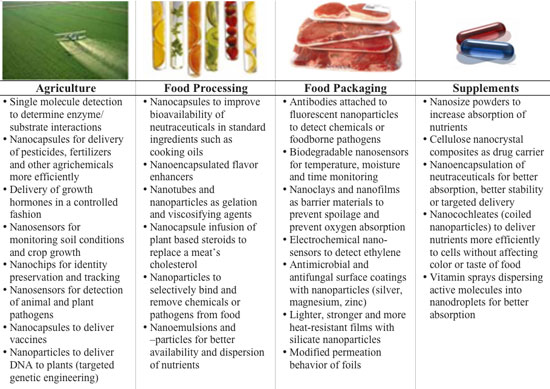
Wednesday, 8 February 2012
Thought Control - but by whom, or what?
Download the full PDF Here You don't have to read the whole thing (though it's well worth it if you do. But to give you a taster, and where the research might lead, the introduction begins
"Electrical signals in the brain govern the complexity of the human body and mind. Being able to switch and control these signals externally represents an important tool to answer questions about sensory, motor and behavioral events, which fundamentally control our health."
Nanowerk news (08-02-2012) reports that the University of Washington electrical engineer Lih Y. Lin and biophysicist Fred Rieke said the experiments show that "it is possible to excite neurons and other cells and control their activities remotely using light. This non-invasive method can provide flexibility in probing and controlling cells at different locations while minimizing undesirable effects."
"Many brain disorders are caused by imbalanced neural activity," Rieke adds, and so "techniques that allow manipulation of the activity of specific types of neurons could permit restoration of normal--balanced--activity levels"--including the restoration of function in retinas that have been compromised by various diseases. "The technique we describe provides an alternative tool for exciting neurons in a spatially and temporally controllable manner. This could aid both in understanding the normal activity patterns in neural circuits, by introducing perturbations and monitoring their effect, and how such manipulations could restore normal circuit activity."
Saturday, 4 February 2012
Video of Action Heroes in Training,
Elizabeth Streb tells Kurt Andersen about the genesis of her "extreme choreography" on site at her dance laboratory in Brooklyn. Her new book is called, "Streb: How to Become an Extreme Action Hero." After seeing Streb's action heroes up close, Kurt learned how to start becoming one himself.
Listen to Kurt's entire conversation with Streb here:
http://www.studio360.org/episodes/2010/04/30/segments/154164
Friday, 3 February 2012
Is there anybody out there? Probably yes, says scientists.
Corporate Aliens. Was Alister's father right about the Centauri Foundation?
Thursday, 2 February 2012
Prophetic SciFi?
In my book, China comes to the rescue of Europe in the time of the Big Freeze.
Similarities with what's going on today it seems.
Full Reuters Article here
Followers of my blog will not have failed to notice how rapidly developments in nanotechnology, bioengineering and Neuroscience is converging and catching up with all the technologies you'll find in the first outing for Alister Cloud. Watch this space.
Augmented Reality Contact Lenses
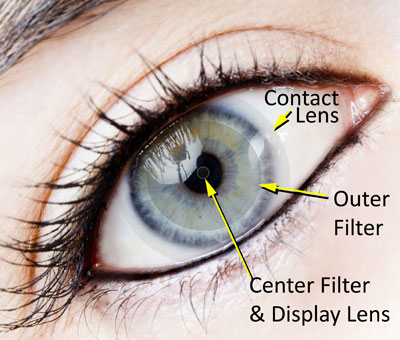
(Nanowerk News) Researchers at DARPA's Soldier Centric Imaging via Computational Cameras (SCENICC) program, based in Innovega iOptiks, are working on contact lenses that enable the wearer to view virtual and augmented reality images.
It won't be long before this, like other military innovations are commercially available and we can say bye-bye to most of our screens.
Digital images are projected onto tiny full-colour displays near the eye.
The user is able to focus both on near and far objects seamlessly giving the user the ability to continue interacting with the surrounding environment.
Anything that helps our people get a military advantage is obviously a good thing and this is a visionary edge.
Next time a solider looks at you, he'll probably know more about you than you know yourself. maybe he can tell you where you left those gig tickets.
Wednesday, 1 February 2012
Don't speak. I know what your thinking
scientists have successfully decoding electrical activity in the brain's temporal lobe as a person listens to normal conversation. Analysing the correlation between sound and brain activity, they were able to predict the words the person had heard solely from the temporal lobe activity.
"This research is based on sounds a person actually hears, but to use it for reconstructing imagined conversations, these principles would have to apply to someone's internal verbalizations," cautioned first author Brian N. Pasley, a post-doctoral researcher in the center. "There is some evidence that hearing the sound and imagining the sound activate similar areas of the brain. If you can understand the relationship well enough between the brain recordings and sound, you could either synthesize the actual sound a person is thinking, or just write out the words with a type of interface device."
Tuesday, 31 January 2012
The Bullet with your name on it will not miss.
 |
| An LED attached to a prototype bullet shows its flightpath during a night-time field test |
A self-guiding bullet that can steer itself towards its target is being developed for use by the US military.
The bullet uses tiny fins to correct the course of its flight allowing it to hit laser-illuminated targets.
It is designed to be capable of hitting objects at distances of about 2km (1.24 miles). Work on a prototype suggests that accuracy is best at longer ranges.
A think tank says the tech is well-suited to snipers, but worries about it being marketed to the public.
Monday, 30 January 2012
Perfectly Secure Cloud Computing? Really?
Cloaking of real world 3D objects now possible
Published Jan. 26 in the Institute of Physics and German Physical Society's New Journal of Physics ("Experimental verification of three-dimensional plasmonic cloaking in free-space"), the researchers used a method known as "plasmonic cloaking" to hide an 18-centimetre cylindrical tube from microwaves.
Friday, 27 January 2012
Predictive text - Your Cold Hard Future in your (and the FBI's) hands.
BBC News report the FBI is seeking to develop an early-warning system based on material "scraped" from social networks. The intention is for the application to provide information about possible domestic and global threats superimposed onto maps "using mash-up technology".
The FBI's Strategic Information and Operations Center (SOIC) posted its "Social Media Application" market research request onto the web on 19 January, and it was subsequently flagged up by New Scientist magazine.
The document says: "Social media has become a primary source of intelligence because it has become the premier first response to key events and the primal alert to possible developing situations."
It says the application should collect "open source" information and have the ability to:
Provide an automated search and scrape capability of social networks including Facebook and Twitter.
- Allow users to create new keyword searches.
- Display different levels of threats as alerts on maps, possibly using colour coding to distinguish priority. Google Maps 3D and Yahoo Maps are listed among the "preferred" mapping options.
- Plot a wide range of domestic and global terror data.
- Immediately translate foreign language tweets into English.
Wednesday, 25 January 2012
Is that nanotech wi-fi you're wearing?
Weaving electronics into the fabric of our physical world
(Nanowerk News. Jan 24th) The potential applications for nanophotonics and nanoelectronics are truly startling, suggesting the brink of a revolution in human–machine interfaces that could turn science fiction into a reality. From interactive paper to clothing that generates energy and light-weight material with X-ray capabilities, weaving electronics into the building blocks of everyday materials will undoubtedly impact how we live in the future.
In the next few years we'll see a real increase in the number of 'nano-enhanced' clothes we buy. Cornell University for the past year have been working on fabrics that block toxic gasses to protect emergency responders, T-shirts that change color and kill bacteria and dresses that can recharge your iDevice.
Saturday, 21 January 2012
Nano-enhanced Vehicle and Body Armour
 |
| Halloysite nanotubes imaged at Cornell University |
NaturalNano Signs Development and Supply Agreement for Improved Vehicle and Body Armour Products
(Nanowerk News) NaturalNano and Sparta Armor announced that the companies have entered into an exclusive Joint Development and Supply Agreement to utilize their combined technologies. NaturalNano and Sparta Armor will develop a range of products and applications that combine their respective patented technologies to create a new class of high performance additives. These will significantly improve the mechanical properties of Sparta's Vehicle and Body Armour materials. Under the agreement, NaturalNano and Sparta will produce new products using NaturalNano's Halloysite Natural Tubes (HNT) which Sparta will sell exclusively.
Developments in Nanotechnology is a rapidly expanding field and the next step in the cycle is already happening with convergences between DNA manipulation, nanotechnology, computing, human biological sciences including neurology.
My soon to be published book is built upon three years of closely following developments in these fields and extrapolating forwards to the impact of viable convergences on everyday life. Watch this space.
 |
| Halloysite nanotubes imaged at Alfred University with a transmission electron microscope |
Friday, 20 January 2012
Friday, 13 January 2012
World's official 'We're Doomed' Friday 13th News Item
The clock was moved to five minutes to midnight, the Bulletin of the Atomic Scientists said, the first adjustment since the beginning of 2010, when it was moved back one minute to six minutes from midnight -- or "doomsday"."
It's official, we are not alone!
After a six-year search that surveyed millions of stars, the team concludes that planets around stars are the rule rather than the exception.
Since there are more Galaxies out there than all the grains of sand on all the beaches in the world - and each galaxy has billions of stars, chances are there's a planet out there with faster broadband and cleaner air that we have round here. Hi guys!
Is your car Nano-punk'd? Probably more than you realize!!
See into anything with smallest device yet
(Nanowerk News) A terahertz transmitter developed at the TU Darmstadt has generated the highest frequency ever attained by a microelectronic device. The minuscule device operates at room temperature and paves the the way for new applications.
Terahertz (THz) electromagnetic radiation has wavelengths between the ranges of 0.1 mm and 1 mm. At this frequency they can penetrate materials, such as plastics, paper, fabrics, or ceramics. No need to explore or examine the interior contents or workings of a while host of objects and mechanisms.
Possible uses include analyzing processes occurring in engine combustion chambers while engines are running, inspecting packages and letters for hazardous biological substances without need for opening them.
Thursday, 12 January 2012
Another piece of the Soft-Machine outfit closer to reality
(Nanowerk News) A discovery by a research team at North Dakota State University, Fargo, and the National Institute of Standards and Technology (NIST), shows that the flexibility and durability of carbon nanotube films and coatings are intimately linked to their electronic properties. The research could one day impact flexible electronic devices such as solar cells and wearable sensors.
Visible Quantum light.
(Nanowerk News) A Cambridge team have built a semiconductor chip that converts electrons into a quantum state that emits light but is large enough to see by eye. Because their quantum superfluid is simply set up by shining laser beams on the device, it can lead to practical ultrasensitive detectors. Their research is published in Nature Physics.
Nanoscale biological coating is a new way to stop bleeding
Nanotechnology News website 'Nanowerk' reports:
(Nanowerk News) MIT engineers have developed a nanoscale biological coating that can halt bleeding nearly instantaneously, an advance that could dramatically improve survival rates for soldiers injured in battle.
The researchers, led by Paula Hammond and funded by MIT's Institute of Soldier Nanotechnologies and a Denmark-based company, Ferrosan Medical Devices A/S, created a spray coating that includes thrombin, a clotting agent found in blood. Sponges coated with this material can be stored stably and easily carried by soldiers or medical personnel. The sponges could also prove valuable in civilian hospitals, says Hammond, the David H. Koch Professor in Engineering.
Full Story on the >Jump Here<
And while you are there, don't forget to vote for them. :)
He's dead, Jim!
BBC Web news are reporting the following:
"A $10m (£6.5m) prize is on offer to whoever can create a Star Trek-like medical "tricorder".Full story on the >Jump Here<
The Qualcomm Tricorder X Prize has challenged researchers to build a tool capable of capturing "key health metrics and diagnosing a set of 15 diseases".
It needs to be light enough for would-be Dr McCoys to carry - a maximum weight of 5lb (2.2kg).
The prize was launched at the Consumer Electronics Show in Las Vegas."
Monday, 9 January 2012
Mathematicians give Moriarty's schemes gravity.
Alain Goriely and Derek Moulton at Oxford’s Mathematical Institute worked behind the scenes of the latest Sherlock Holmes film helping to formulate a believable mathematical villain in Moriarty.
Initially, the filmmakers approached the mathematicians to ask them to fill Moriarty’s blackboard with equations. Not only did they have to be real, they had to be historically accurate, based on a 19th-century understanding of the field.
“When we did the equations on the blackboard, [the film-makers] got excited,” says Goriely. “Although they were quite secretive about the story, they told us that Moriarty was a mathematics professor and that they wanted us to help them add more meat to the script, which was a little dumb and mostly incorrect.”
Goriely and Moulton ended up going beyond script-tweaking to develop a secret code from scratch that Moriarty uses in the film to send messages around a Europe on the brink of the war he is conniving.
Read the full text here

Saturday, 7 January 2012
Nanopaint Converts Sunlight to Electricity
Electricity is created when the paint is brushed onto a conducting material and exposed to light.
The paint is a water alcohol base containing particles of titanium dioxide coated with cadmium based substances .
More on the jump >Here<




















